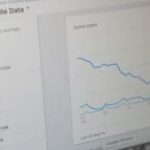
Wage growth in the UK has decelerated to its slowest rate in nearly two years, signalling a cooling labour market as the Bank of England considers a potential interest rate cut next month.
Official data reveals that average weekly earnings, excluding bonuses, declined from 6% to 5.7% in the three months leading to May, aligning with economists’ predictions. This marks the slowest growth rate since September 2022. Total earnings, including bonuses, also increased by 5.7%, down from 5.9% in the previous three-month period.
The unemployment rate remained stable at 4.4% in May, as reported by the Office for National Statistics (ONS).
Most members of the Bank’s monetary policy committee have emphasised the need for more evidence of a sustained reduction in wage growth before considering what would be the first interest rate cut in four years.
Expectations for an August rate cut diminished significantly after inflation data indicated that a key measure of prices in the services sector held steady at 5.7% in June, despite headline inflation meeting the Bank’s 2% annual target.
Further indications of a softening jobs market include a decline in the number of vacancies, which fell by 30,000 to 889,000—the lowest in three years. The employment rate slightly decreased to 74.4% in May, while the inactivity rate, measuring working-age individuals not in the labour market, dipped marginally to 22.1% from 22.2%.
The ONS commented, “This month’s labour market figures continue to show signs of gradual cooling, with the number of vacancies still falling and unemployment rising. Earnings growth remains relatively strong, although lower than a few months ago.”
However, the ONS warned that its unemployment and job figures, which have faced low response rates since last year, should be “treated with additional caution” as it prepares to introduce a revamped labour force survey later this year.
Read more:
UK wage growth slows to two-year low amid cooling labour market






